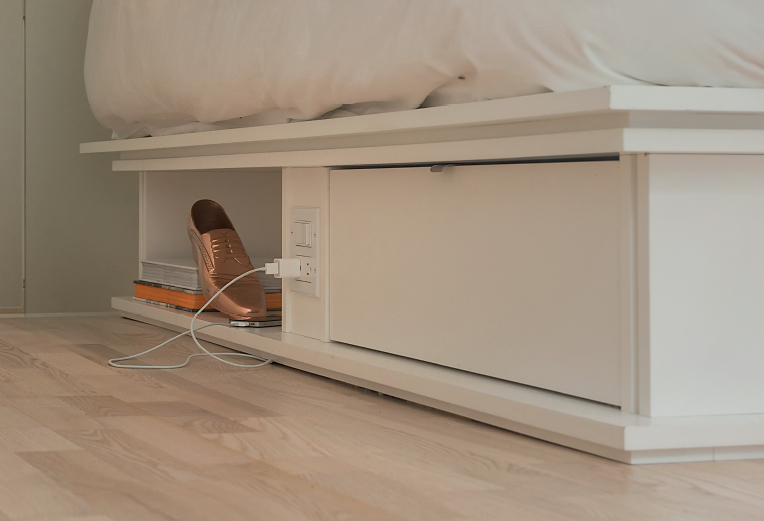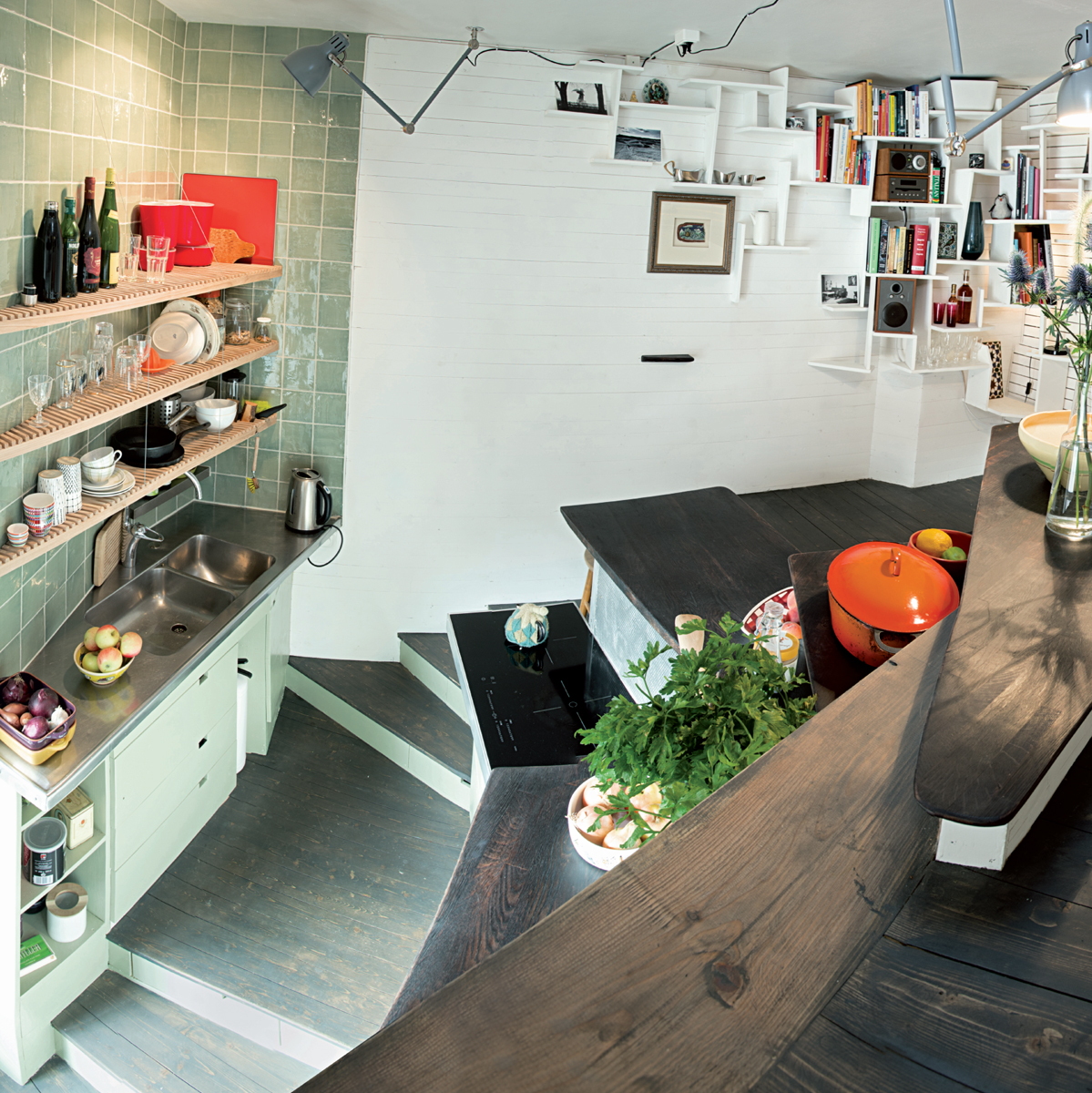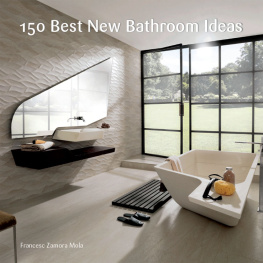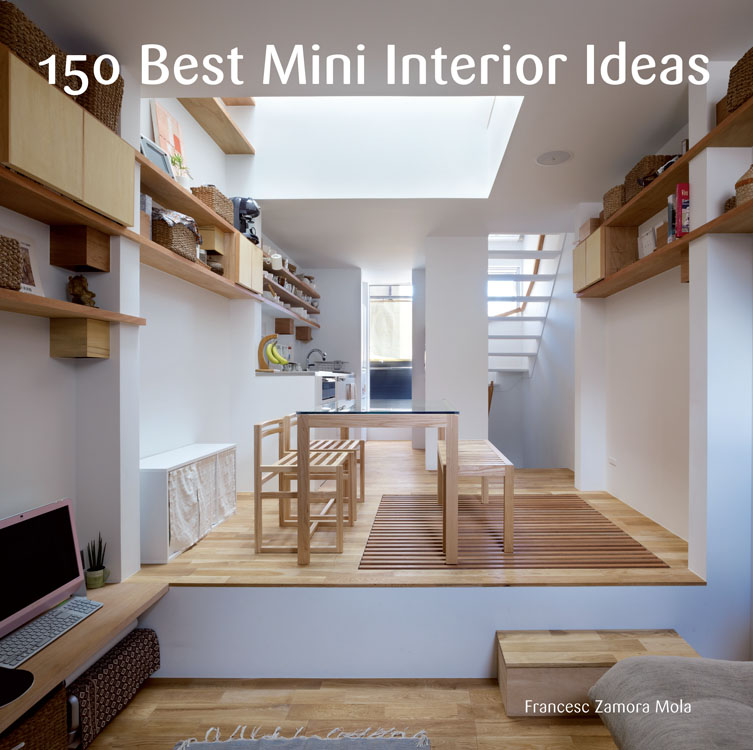Contents

A scarcity of space can trigger talent and creativity. Nothing is sacrificed among the studios, apartments, lofts and other properties that are featured in this book. Architects do not shrink in the face of small spacesthey simply aim to achieve the same level of comfort in six hundred square feet as in two thousand. In fact, their ambition is to achieve what may sound impossible: the same sense of space in both. This book is a search for sensory achievement, and these words are designed to focus our attention on the tools. The illustrations in this book are diverse: rural and urban constructions; townhouses and unusual homes; brand-new constructions and renovations of existing properties.
The marks of genius are those that overcome every challenge, but the search for space where there is little is governed by a few common rules. One important one is pulling down walls. This creates large empty spaces, and with minimal furniture and optimal lighting, an uninterrupted space seems to expand before our eyes. The space stretches from inside to out, in touch with nature, expanding within the house by connecting it with the infinite beyond. And many other tricks are used, of course. Multifunctional rooms; transformable furniture; and architectural elements that are also furniture define these designs.
The items are fitted into the box so we do not feel boxed in ourselves. What remains is an homage to the use of our living space. Welcome to this journey through functional architecture. It is one that you will make with very few steps indeed. 
125 sq ft Designer and builder: Jerome A. Levin Location: Roslyn Harbor, NY, USA Photographer: Jerome A.
Levin Micro House, also dubbed the Metapod, was designed as a garden retreat that both adults and children can enjoy. The simple structure can also be adapted to be used as sustainable, affordable and off-the-power-grid housing. All these features contribute to the singularity and character of this project. 


 The Metapod has a study area, an entertainment area and handcrafted furniture, including a collapsible oak loft bed. A pocket door was custom-designed to maximize the interior usable space.
The Metapod has a study area, an entertainment area and handcrafted furniture, including a collapsible oak loft bed. A pocket door was custom-designed to maximize the interior usable space. 

161 sq ft Architect: Tim Wickens Architect Location: Toronto, ON, Canada Photographer: Bob Gundu The conversion of an existing 160-square-foot attic space into a functional master suite was a challenging project for these architects, who created a room open to a shaded, south-facing terrace with views of downtown Toronto.


Put the space under the bed, which often ends up collecting random junk, to good use.


Put the space under the bed, which often ends up collecting random junk, to good use.
Platform beds can help you take control of that area in an organized manner. 

 Partially supported by a glass balustrade, the makeup and jewelry table floats over the staircase to the second floor, making the most of limited space.
Partially supported by a glass balustrade, the makeup and jewelry table floats over the staircase to the second floor, making the most of limited space.  The en-suite bathroom occupies a three-foot strip of floor space under a sloping ceiling. It is cut out and dropped one step down into the headspace of the second-floor bedroom below.
The en-suite bathroom occupies a three-foot strip of floor space under a sloping ceiling. It is cut out and dropped one step down into the headspace of the second-floor bedroom below. 
 The two spaces behind the frosted glass headboard are defined by a marble pier as separate shower and powder rooms, but they are linked by a continuous tile bench that runs the full length of the wall.
The two spaces behind the frosted glass headboard are defined by a marble pier as separate shower and powder rooms, but they are linked by a continuous tile bench that runs the full length of the wall.
183 sq ft Architect: Torsten Ottesj Location: Gothenburg, Sweden Photographer: David Relan In response to the clients desire to make the most of this small space, the designers transformed it into a multilevel nest that includes two staircases, a bedroom, a bathroom with shower, a fully equipped kitchen, a home office, a closet and a livingdining room that doubles as a guest room.
The different areas are placed in relation to the only window. 


 In small open-plan homes, using a multilevel layout can ensure that the space is organized into different zones.
In small open-plan homes, using a multilevel layout can ensure that the space is organized into different zones.  The creation of small livable spaces with inexpensive local materials generates sustainable environments that make a statement about living in a resource-conscious way.
The creation of small livable spaces with inexpensive local materials generates sustainable environments that make a statement about living in a resource-conscious way. 















 A scarcity of space can trigger talent and creativity. Nothing is sacrificed among the studios, apartments, lofts and other properties that are featured in this book. Architects do not shrink in the face of small spacesthey simply aim to achieve the same level of comfort in six hundred square feet as in two thousand. In fact, their ambition is to achieve what may sound impossible: the same sense of space in both. This book is a search for sensory achievement, and these words are designed to focus our attention on the tools. The illustrations in this book are diverse: rural and urban constructions; townhouses and unusual homes; brand-new constructions and renovations of existing properties.
A scarcity of space can trigger talent and creativity. Nothing is sacrificed among the studios, apartments, lofts and other properties that are featured in this book. Architects do not shrink in the face of small spacesthey simply aim to achieve the same level of comfort in six hundred square feet as in two thousand. In fact, their ambition is to achieve what may sound impossible: the same sense of space in both. This book is a search for sensory achievement, and these words are designed to focus our attention on the tools. The illustrations in this book are diverse: rural and urban constructions; townhouses and unusual homes; brand-new constructions and renovations of existing properties. 



 The Metapod has a study area, an entertainment area and handcrafted furniture, including a collapsible oak loft bed. A pocket door was custom-designed to maximize the interior usable space.
The Metapod has a study area, an entertainment area and handcrafted furniture, including a collapsible oak loft bed. A pocket door was custom-designed to maximize the interior usable space. 


 Put the space under the bed, which often ends up collecting random junk, to good use.
Put the space under the bed, which often ends up collecting random junk, to good use. 

 Partially supported by a glass balustrade, the makeup and jewelry table floats over the staircase to the second floor, making the most of limited space.
Partially supported by a glass balustrade, the makeup and jewelry table floats over the staircase to the second floor, making the most of limited space.  The en-suite bathroom occupies a three-foot strip of floor space under a sloping ceiling. It is cut out and dropped one step down into the headspace of the second-floor bedroom below.
The en-suite bathroom occupies a three-foot strip of floor space under a sloping ceiling. It is cut out and dropped one step down into the headspace of the second-floor bedroom below. 
 The two spaces behind the frosted glass headboard are defined by a marble pier as separate shower and powder rooms, but they are linked by a continuous tile bench that runs the full length of the wall.
The two spaces behind the frosted glass headboard are defined by a marble pier as separate shower and powder rooms, but they are linked by a continuous tile bench that runs the full length of the wall.


 In small open-plan homes, using a multilevel layout can ensure that the space is organized into different zones.
In small open-plan homes, using a multilevel layout can ensure that the space is organized into different zones.  The creation of small livable spaces with inexpensive local materials generates sustainable environments that make a statement about living in a resource-conscious way.
The creation of small livable spaces with inexpensive local materials generates sustainable environments that make a statement about living in a resource-conscious way. 